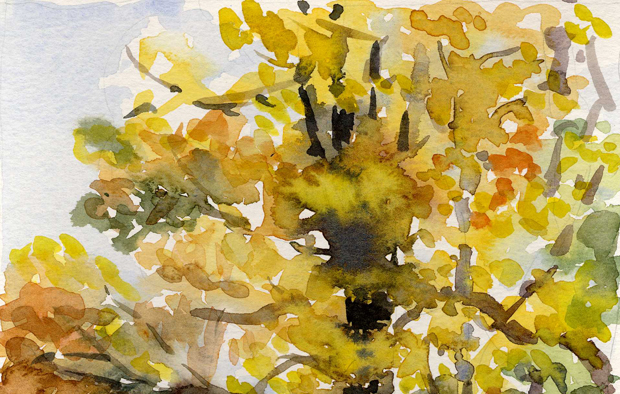Where there is sadness, joy.
Of the four temperaments, I tend to swing between choleric and melancholic. Think Rabbit and Eeyore in the Winnie the Pooh stories. I find it difficult to be around gloomy, negative people because they tend to awaken a deep sadness within me, and pull me down into their misery. Early on, probably through parental influence, I developed a coping strategy of talking myself out of my sadness. After all, what do I have to be sad about? I have a roof over my head, clothing, food, a good education . . . . The list is quite long, yet this exercise often just makes me feel guilty when I am sad, even so.
A child has no idea of the burdens or shadows a parent or family or culture is asking her to carry. I was always a sensitive child, absorbing the emotions of others, too thin-skinned to resist. In the face of all that pain, it felt selfish and uncaring to be joyful. At any rate, when confronted by the sadness of others, it seemed an insurmountable challenge to summon joy. Sadness felt like an anchor, dragging down any momentum to joy, preventing even full sails from driving the boat of my life forward towards the distant horizon.
The temperaments teach us that some people naturally gravitate towards one or another. Think of Tigger’s high energy or Winnie-the-Pooh’s unambitious contentment. Joyful people are magnetic; they light us up while we’re in their presence. By contrast, most of us would rather avoid the Eeyores. As I’ve gotten older and more observant, I’ve noticed that our culture in general tends to the negative, the gloomy, critical and sad.
A recent book on the theoretical origins of capitalism reflects a bias towards enjoyment as weak-willed and subversive, contrasted with work as serious and morally superior. And isn’t that one of the ways our cultural conditioning infects us? You may be thinking, speak for yourself, and if so, count yourself among the lucky few. We may have evolved from factories to cubicle farms, but the bias towards repeititve dullness and duty is still there.
Lately, I have experimented with putting joy first. This feels incredibly irresponsible, almost naughty. I was raised to slog through all my daily duties, and only then, at the very end of that long list, allow myself a bit of leisure time, fun, and enjoyment. The idea that the whole day’s work could itself be sourced in joy was simply never mentioned. That it occasionally happened was an exception, an accident.
As an activist, for many years I sought to go where I was most needed, where I could most effectively affect and change the status quo. In fact, this search became almost an end in itself. And since there is no end of negativity and sadness out there, it became an obsession to locate the exact place where I could do the most good. Where can I get the biggest bang for the buck?
I finally understood the futility of this when I witnessed a beloved colleague agonizing over the very same question during a meeting. It struck me as an absurd thing to worry about, and I found myself saying: Do what your heart tells you to do. Do what you love. He gave me such a puzzled look I may as well have been speaking in Chinese.
My feeling now is, I’ve tried the way of sadness and I’ve tried the way of joy, and joy feels better. A lot better. Even knowing we reap what we sow, I still have decades of conditioning to overcome. My challenge each day is to live from joy. To choose joy. Again, the paraphrase: There is no way to joy. Joy is the way.
I embody this pair of opposites by doing things each day that bring me joy, even though I still feel the sadness out there, and in my own heart. I am so wired for sadness and reactive to it in the people around me, I must take care not to push it away but to make space for it. We have created a world for ourselves that elevates sadness and treats joy as trivial and naïve, and yet I will daily summon the strength and courage to embody joy. Not to thrust forth joy as a superior replacement emotion, but to admit the possibility that there is room for both in the natural order of things.
Read the whole Prayer of St. Francis here. And the first of this series here.

